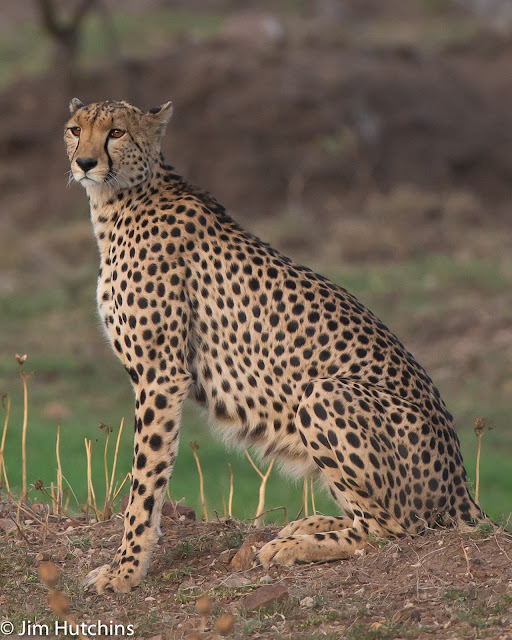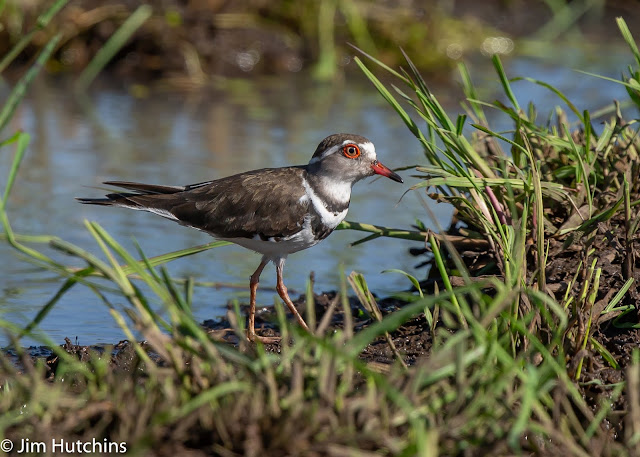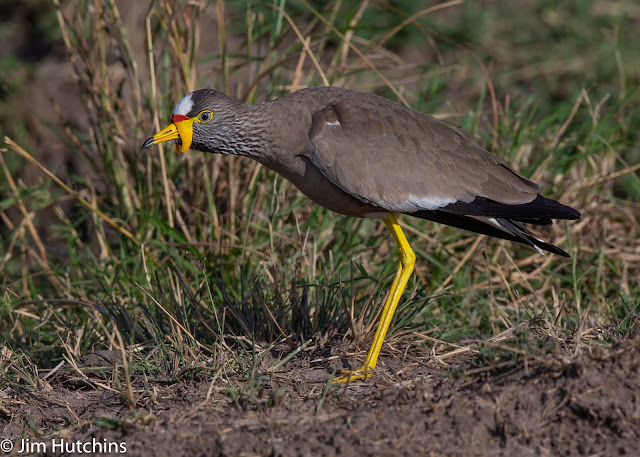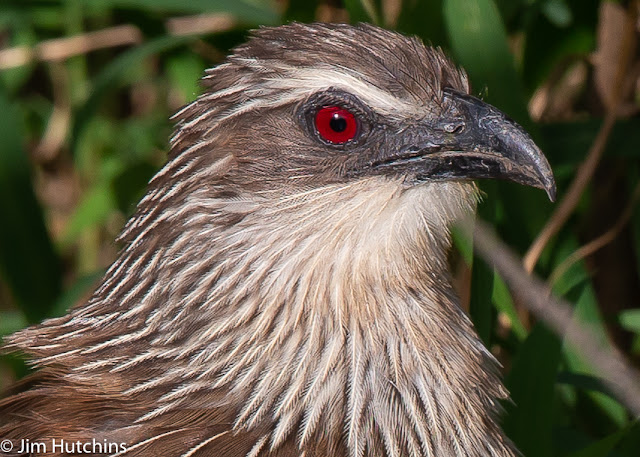|
|
White-browed Coucal
Kenya’s borders, as in most of Africa, do not reflect social or tribal boundaries. Many borders are straight lines drawn by European colonialists with a ruler while paying scant regard to tribal and cultural differences. Kenya boasts 42 separate tribes with different languages and cultures that all somehow peacefully merge to become the unique mix of Kenyan culture. While the official languages of Kenya are Swahili and English each tribe also has its own language. This means that many Kenyans speak at least three languages putting the linguistic skills of most English folk to considerable shame. By and large Kenya has avoided the tribal conflict that neighbouring countries have suffered in recent times with such terrible human cost. So perhaps it is not too surprising that the biggest desire of most Kenyans is simply for a peaceful existence. Apart from the main driver of comfort and security for their friends and family, so much of Kenya’s economy is tourist driven that any trouble would cause considerable additional hardship in a country where many people already survive in deep poverty.
While staying at Kicheche Maasai bush camp the lovely managers, Darren and Emma, told us about a woman’s co-operative a short drive from the camp and we were immediately keen to visit. Maa Beadwork is an empowerment project for over 400 Maasai woman around the Maasai Mara, many of whom have suffered abusive relationships or forced marriages. Their co-operative aims to give the woman craft skills to enable them to become financially self-sufficient. On arrival we were giving a short talk on the co-operative by the manager and then met some of the woman who were producing beautiful items using traditional Maa bead work. Each item is sold labelled with a picture of the producer and a little bit about her background and hopes and aspirations. We brought a few items and gifts to take home including two lovely beaded leather leads for our dogs.
The Maasai Mara hosts a very unusual and possibly unique coalition of five male cheetahs as featured recently on BBC’s Seven Worlds One Planet. It is believed to consist of two pairs of brothers plus the collation leader. The coalition specialises in wildebeest which are normally considered too large for a cheetah to hunt. They have adopted a very clever strategy whereby the four junior cheetahs will often act as a distraction while the lead cheetah sneaks up on its prey. Their famous turn of speed can only be sustained in short bursts so to give a good chance of a successful kill the lead male must get within fifty or so meters of the target. We were very lucky to encounter the gang of five on one of our safari drives and spent several hours watching them prowling the bush.
|
 |
|
 |
|

We also met a female with five young boisterous cubs. Unlike lion cubs the cheetah cubs don’t resemble miniature versions of the fully grown adult. Rather they have evolved to more closely resemble the very aggressive honey badgers and are hence normally left very well alone!
 |
| Cheetah cubs |
 |
| Kori Bustard |
Of all the wonderful birds we encountered in the Maasai Mara perhaps the strangest was the Kori Bustard. Perhaps it’s just me but its proportions seem all wrong rather as if it has visited one of those very unflattering halls of mirrors and come out stuck in the distorted image!
 |
| Ruppell's long-tailed Starling |
 |
Yellow-billed Oxsucker
|
Oxpeckers were very much in evidence on the grazing herds hyperactively removing ticks and other insects from the animals while gaining a tasty meal in return.
 |
Sooty Chat
|
 |
Grey Woodpecker
|
 |
Malachite Kingfisher
|
 |
Malachite Kingfisher
|
 |
Three-banded Plover
|
 |
Grey-headed Kingfisher
|
 |
African Wattled Plover
|
 |
Sooty Falcon
|
 |
White-browed Coucal
|
 |
Grey-backed Fiscal
|
 |
Fig the Leopard
|
 |
Baboon
|
 |
| Banded Mongoose |
After three wonderful days at bush camp we said a sad goodbye to Darren, Emma and Vinnie and flew to Diani beach just north of Mombasa on Kenya’s east coast. Previous experience had taught us that safari holidays can be quite exhausting with many early starts and long days so we had planned to spend our last three days on holiday at a beach resort overlooking the Indian ocean. This was total chill-out time with little planned in terms of birdwatching and other activities, just lazing about eating, drinking, reading and dozing before heading home. I did, however, have one particularly memorable wildlife encounter. On our last morning Carolyn got up early for a horse ride along the beach and I was dozing in bed when I heard something fall off our bedroom table. Assuming something had just rolled off I sat up to see a money sitting on the end of the bed! I’m not sure who was more surprised but after staring at each other for a few seconds the monkey beat a hasty retreat! The hosts subsequently told me that a couple of the local troop of Colobus monkeys had built up the courage to enter the accommodation in search of tasty treats left lying around by unsuspecting tourists. Apparently one monkey had got into someone’s bedroom and run off with an unfortunately chap's iPhone. The monkey took it into a tree and after a couple of bites decided it was not edible and threw the heavily damaged phone back on the ground.
 |
| Colobus Monkey |
We flew back to Nairobi on October 14th and had a last Kenyan drink in the rooftop bar of the airport Sheraton where we had started our African adventure just two short weeks ago. We both agreed that it was the most wonderful holiday we have had and promised each other that we would definitely return to Kenya and its truly wonderful people soon.
The complete bird list
| 1 | Yellow-breasted Apalis |
| 2 | Black-lored Babbler |
| 3 | Brown Babbler |
| 4 | d'Arnaud's Barbet |
| 5 | Red-and-yellow Barbet |
| 6 | Red-fronted Barbet |
| 7 | Bateleur |
| 8 | Pygmy Batis |
| 9 | Little Bee-eater |
| 10 | White-throated Bee-eater |
| 11 | Northern Red Bishop |
| 12 | Slate-colured Boubou |
| 13 | Brubru |
| 14 | Common Bulbul |
| 15 | Black-bellied Bustard |
| 16 | Kori Bustard |
| 17 | White-bellied Bustard |
| 18 | Augur Buzzard |
| 19 | White-bellied Canary |
| 20 | Yellow-fronted Canary |
| 21 | Northern Anteater Chat |
| 22 | Sooty Chat |
| 23 | White-shouldered Cliff Chat |
| 24 | Rufous Chatterer |
| 25 | Rattling Cisticola |
| 26 | Wing-snapping Cisticola |
| 27 | Great Cormorant |
| 28 | Long-tailed Cormorant |
| 29 | White-browed Coucal |
| 30 | Heuglin's Courser |
| 31 | Temmick's Courser |
| 32 | Grey Crowned Crane |
| 33 | Red-faced Crombec |
| 34 | House Crow |
| 35 | Pied Crow |
| 36 | Diederik Cuckoo |
| 37 | White-breasted Cuckoo-shrike |
| 38 | African Darter |
| 39 | African Mourning Dove |
| 40 | Emerald-spotted Wood Dove |
| 41 | Laughing Dove |
| 42 | Namaqua Dove |
| 43 | Red-eyed Dove |
| 44 | Ring-necked Dove |
| 45 | Common Drongo |
| 46 | Yellow-billed Duck |
| 47 | African Fush Eagle |
| 48 | Banded Snake Eagle |
| 49 | Long-crested Eagle |
| 50 | Martial Eagle |
| 51 | Tawny Eagle |
| 52 | Verreaux's Eagle |
| 53 | Cattle Egret |
| 54 | Great Egret |
| 55 | Little Egret |
| 56 | Yellow-billed Egret |
| 57 | Lanner Falcon |
| 58 | Sooty Falcon |
| 59 | Red-billed Firefinch |
| 60 | Grey-backed Fiscal |
| 61 | Taita Fiscal |
| 62 | Greater Flamingo |
| 63 | Lesser Flamingo |
| 64 | African Grey Flycatcher |
| 65 | African Paradise Flycatcher |
| 66 | Pale Flycatcher |
| 67 | White-eyed Slaty Flycatcher |
| 68 | Coqui Francolin |
| 69 | Shelly's Francolin |
| 70 | White-bellied Go-away-bird |
| 71 | Egyptian Goose |
| 72 | Spur-winged Goose |
| 73 | Gabar Goshawk |
| 74 | Little Grebe |
| 75 | Helmeted Guineafowl |
| 76 | Grey-headed Gull |
| 77 | Hamerkop |
| 78 | Montagu's Harrier |
| 79 | White-crested Helmet-shrike |
| 80 | Black-headed Heron |
| 81 | Goliath Heron |
| 82 | Green-backed Heron |
| 83 | Grey Heron |
| 84 | Purple Heron |
| 85 | Squacco Heron |
| 86 | Hoopoe |
| 87 | Crowned Hornbill |
| 88 | Hemprich's Hornbill |
| 89 | Jackson's Hornbill |
| 90 | Red-billed Hornbill |
| 91 | Trumpeter Hornbill |
| 92 | Von der Decken's Hornbill |
| 93 | Glossy Ibis |
| 94 | Hadada Ibis |
| 95 | Sacred Ibis |
| 96 | African Jacana |
| 97 | Giant Kingfisher |
| 98 | Malachite Kingfisher |
| 99 | Pied Kingfisher |
| 100 | Striped Kingfisher |
| 101 | Black-shouldered Kite |
| 102 | Pink-breasted Lark |
| 103 | Red-capped Lark |
| 104 | Rufous-naped Lark |
| 105 | Singing Bush Lark |
| 106 | Yellow-throated Longclaw |
| 107 | Plain Martin |
| 108 | Blue-naped Mousebird |
| 109 | Speckled Mousebird |
| 110 | Nubian Nightjar |
| 111 | Slender-tailed Nightjar |
| 112 | Black-headed Oriole |
| 113 | Common Ostrich |
| 114 | African Scops Owl |
| 115 | Greyish Owl |
| 116 | Spotted Eagl-owl |
| 117 | Verreaux's Eagle-owl |
| 118 | White-faced Scops Owl |
| 119 | Pearl-spotted Owlet |
| 120 | Red-billed Oxpecker |
| 121 | Yellow-billed Oxpecker |
| 122 | Eurasian Oystercatcher |
| 123 | Brown Parisoma |
| 124 | Brown Parot |
| 125 | Great White Pelican |
| 126 | Yellow-spotted Petronia |
| 127 | Speckled Pigeon |
| 128 | Grassland Pipit |
| 129 | Plain-backed Pipit |
| 130 | Blacksmith Plover |
| 131 | Black-winged Plover |
| 132 | Crowned Plover |
| 133 | Grey Plover |
| 134 | Kittliz's Plover |
| 135 | Ringed Plover |
| 136 | Senagal Plover |
| 137 | Spur Winged Plover |
| 138 | Three-banded Plover |
| 139 | Banded Prinia |
| 140 | Green-winged Pytiia |
| 141 | Red-billed Quelea |
| 142 | White-browed Robin-chat |
| 143 | Lilac-breasted Roller |
| 144 | Rufous-crowned Roller |
| 145 | Ruff |
| 146 | Sanderling |
| 147 | Yellow-throated Sandgrouse |
| 148 | Common Sandpiper |
| 149 | Marsh Sandpiper |
| 150 | Terek Sandpiper |
| 151 | Black Saw-wing |
| 152 | Abyssian Scimitarbill |
| 153 | Secretary Bird |
| 154 | Northern White-crowned Shrike |
| 155 | Yellow-billed Shrike |
| 156 | Silverbird |
| 157 | Chestnut Sparrow |
| 158 | Grey-headed Sparrow |
| 159 | House Sparrow |
| 160 | Fischer's Sparrow-lark |
| 161 | White-browed Sparrow-weaver |
| 162 | African Spoonbill |
| 163 | Yellow-necked Spurfowl |
| 164 | Bristle-crowned Starling |
| 165 | Greated Blue-eared Starling |
| 166 | Hilderbrandt's Starling |
| 167 | Red-winged Starling |
| 168 | Ruppell's Long-tailed Starling |
| 169 | Superb Starling |
| 170 | Vilot-backed Starling |
| 171 | Wattled Starling |
| 172 | Black-winged Stilt |
| 173 | Little Stint |
| 174 | Marabou Stork |
| 175 | Yellow-billed Storl |
| 176 | Collared Sunbird |
| 177 | Eastern-Violet-backed Sunbird |
| 178 | Marico Sunbird |
| 179 | Red-chested Sunbird |
| 180 | Beautiful Sunbird |
| 181 | Barn Swallow |
| 182 | Ethiopian Swallow |
| 183 | Red-rumped Swallow |
| 184 | Wire-tailed Swallow |
| 185 | African Black Swift |
| 186 | Little Swift |
| 187 | Hottentot Teal |
| 188 | Red-billed Teal |
| 189 | Whiskered Tern |
| 190 | White-winged Tern |
| 191 | Red-tailed Ground Thrush |
| 192 | Spotted Ground Thrush |
| 193 | Mose-colured Penduline Tit |
| 194 | White-bellied Tit |
| 195 | Ruddy Turnstone |
| 196 | African White-backed Vulture |
| 197 | Lappet-faced Vulture |
| 198 | Ruppell's Griffon Vulture |
| 199 | Buff-bellied Warbler |
| 200 | Pale Wren Warbler |
| 201 | Common Waxbill |
| 202 | Chestnut Weaver |
| 203 | Grey-capped Social Weaver |
| 204 | Jackson's Golded-backed Weaver |
| 205 | Lesser Masked Weaver |
| 206 | Norther Masked Weaver |
| 207 | Red-headed Weaver |
| 208 | White-headed Buffalo Weaver |
| 209 | Isabelline Wheatear |
| 210 | Norther Wheatear |
| 211 | Green Wood-hoopoe |
| 212 | Bearded Woodpecker |
| 213 | Cardinal Woodpecker |
| 214 | Gret Woodpecker |
| 215 | Nubian Wood pecker |




























Great stuff & I'm sorry it'll be the last African stuff (until next time! ;oD ) x
ReplyDeleteBrilliant :-)
ReplyDelete